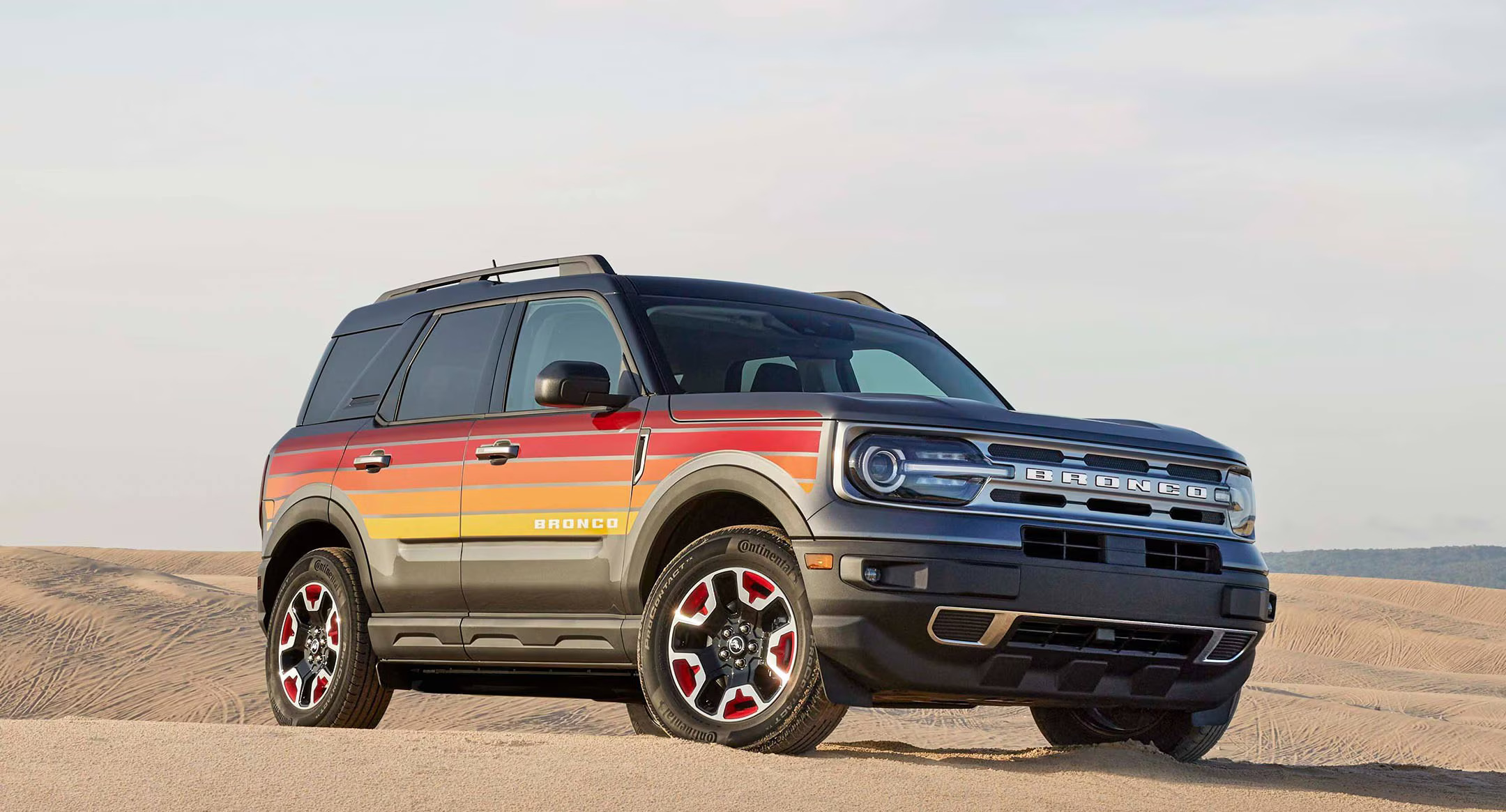SUVs are often chosen for their size, practicality, and, importantly, their ability to handle various weather conditions. When conditions get difficult, snowstorms, heavy rain, muddy backroads, or icy highways, drivers naturally expect an SUV to offer more stability and control than a smaller car.
But not all SUVs meet that expectation. Some are equipped with smart all-wheel drive systems, solid ground clearance, and traction technologies that help the driver maintain control in nearly any weather. Others might look rugged and bold, but can perform poorly when the skies open up and the roads get slippery.
Weather safety isn’t only about the drive train. It includes braking performance, tire grip, weight distribution, and even the quality of the windshield wipers and defogging system. In heavy rain or light snow, you want a vehicle that can maintain traction, give the driver confidence, and react predictably under pressure.
At the same time, some manufacturers prioritize styling, interior gadgets, or off-road appearances at the expense of actual driving security in tough conditions. The difference between a well-engineered, weather-ready SUV and one that struggles in the rain is more noticeable than most people assume.
This article presents five SUVs that consistently perform well across a range of conditions, including rain, snow, and mixed terrain, and five that fall short when it comes to even moderate weather challenges. These lists are not based on internet rankings or new test results, but rather a blend of known vehicle traits, general user experiences, and the mechanical and design choices made by their manufacturers.
The focus is on how the vehicle handles real-world scenarios, especially those that involve wet, slick, or changing road surfaces. The goal isn’t to shame any particular brand, but to give a balanced comparison between those SUVs that are made with weather safety in mind, and those that can leave their drivers surprised, and not in a good way, when conditions turn harsh.
Also Read: 5 Mercedes Models That Rarely Have Recalls vs 5 That Constantly Do
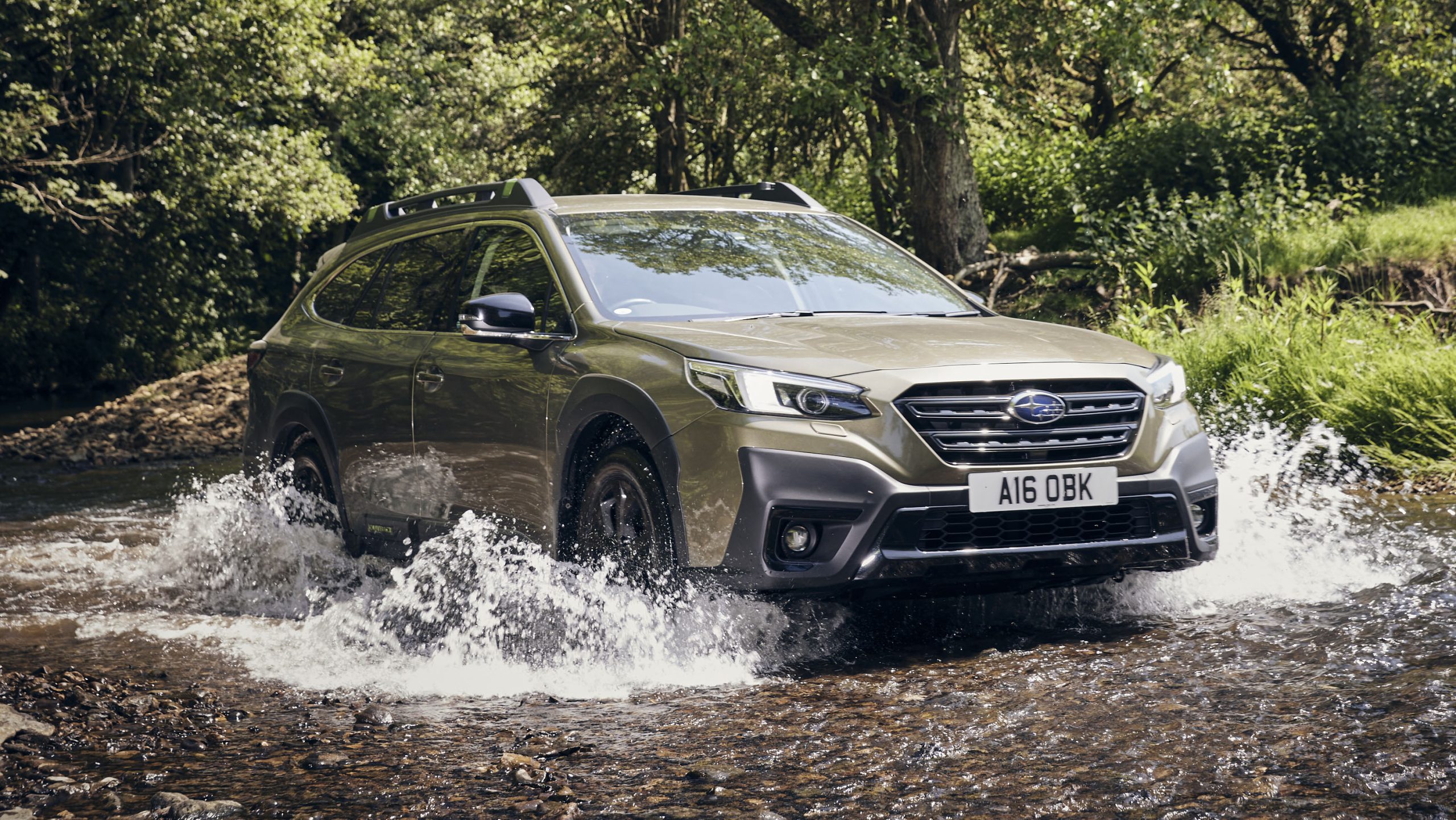
1. Subaru Outback – Built for Tough Conditions
The Subaru Outback isn’t technically a full SUV, but it competes directly with them in terms of function. It features standard all-wheel drive on all trims, a feature that Subaru has prioritized for decades. This makes the vehicle especially dependable when roads are wet or snowy.
The symmetrical all-wheel-drive system helps distribute power evenly, preventing any one wheel from slipping excessively. That’s especially helpful during unexpected rainstorms when the road becomes slick with oil and water. Drivers of the Outback often praise it for staying steady during sharp turns or sudden stops, even when visibility is low and the road surface is unpredictable.
Ground clearance is another factor that makes the Outback a standout. It offers around 8.7 inches, which is more than some larger SUVs. This helps it manage through puddles, light flooding, and snowbanks without dragging the undercarriage.
Combine that with its hill descent control and a smart traction management system, and the Outback behaves more like a serious off-roader than a family wagon. It doesn’t feel too top-heavy, either, which helps avoid the risk of rollover, a known concern in some taller SUVs when roads are slippery. Balance is crucial in wet weather, and the Outback seems to strike that better than many of its rivals.
Interior comfort and visibility also matter during storms. Subaru has improved the visibility in recent generations of the Outback by reducing blind spots and equipping the vehicle with wide-angle mirrors. Add to that its responsive braking system and linear steering feel, and drivers have the tools they need to make confident decisions when the weather turns. Rain-sensing wipers, a powerful defogging system, and high-traction tires come standard on many trims, making it more than capable for year-round use.
Another strength of the Outback is consistency across trims. Some SUVs offer advanced safety and weather features only on the most expensive models. Subaru, in contrast, has made all-wheel drive, high ground clearance, and useful safety features like lane keeping and emergency braking standard.
This ensures that whether someone buys the base or a top-end model, they’re getting a vehicle that won’t be thrown off by poor weather. It’s this combination of smart engineering, smart pricing, and user-centered design that keeps the Outback on the list of dependable SUVs for any condition.
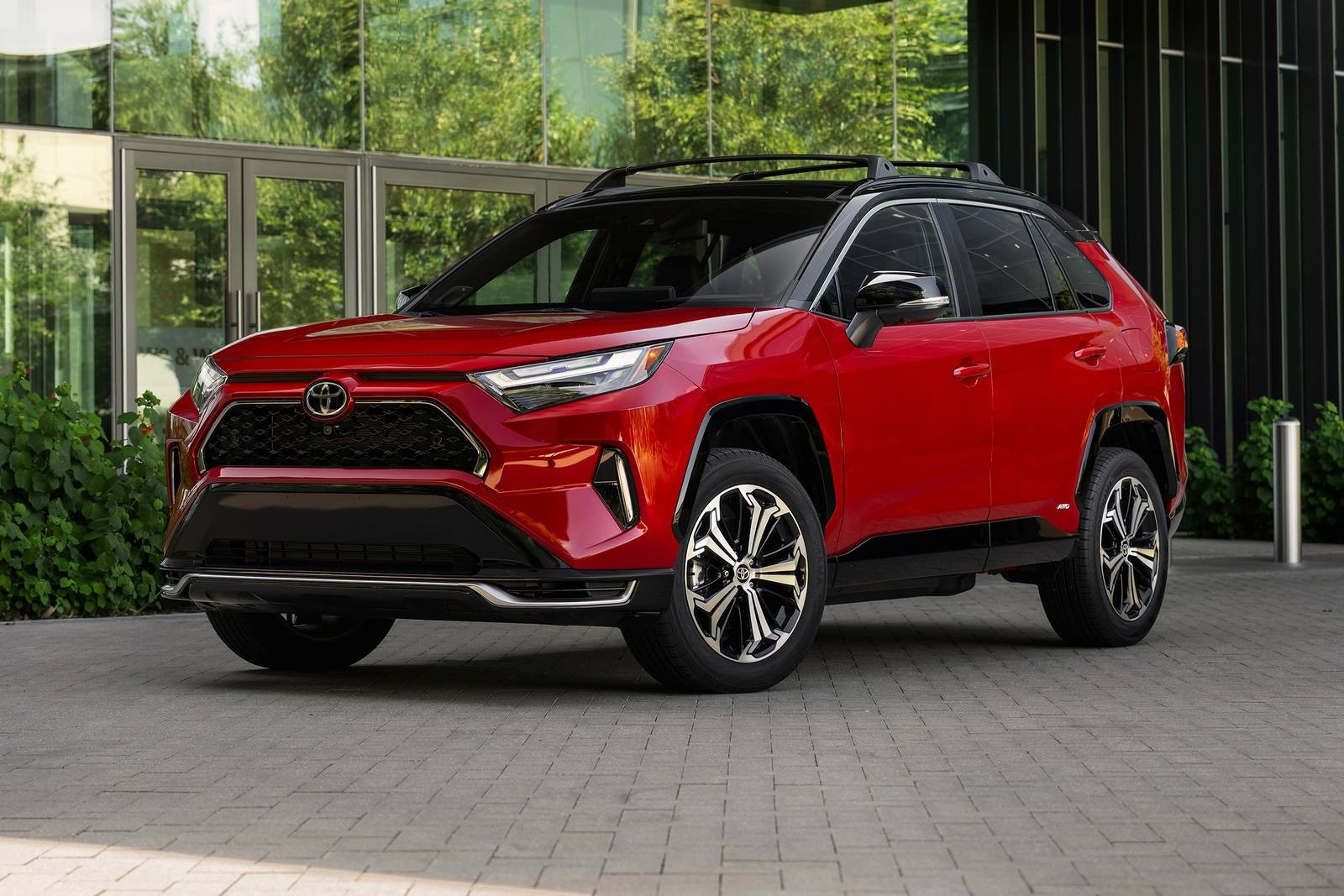
2. Toyota RAV4 – Reliable No Matter the Forecast
The Toyota RAV4 has earned its place as one of the best-selling compact SUVs for a reason. Among its strengths is how well it performs in challenging driving conditions. With optional all-wheel drive and multiple driving modes, including one for mud and sand, the RAV4 adjusts quickly to changing terrain.
Toyota’s Dynamic Torque Vectoring system, available on higher trims, is especially useful in wet conditions. It can direct power not just between the front and rear axles but also between the left and right wheels. This gives the driver more grip, especially in cornering or when accelerating on slick surfaces.
What helps the RAV4 stand out is that it doesn’t just rely on hardware. Its software assistance is equally important. The traction control and stability systems are tuned to be non-intrusive but effective. Drivers don’t feel like the car is constantly correcting them, but when they lose grip even slightly, the vehicle responds smoothly to recover.
The braking system is also tuned for wet conditions, offering short stopping distances even on rainy roads. The available hybrid model benefits from the added weight of the battery, which can lower the center of gravity and improve road grip during storms.
Visibility and wiper performance often get ignored, but they are crucial when rain hits hard. The RAV4’s wide windshield, high seating position, and quality washer system allow for solid visibility even during downpours.
It also has an available rear cross-traffic alert and backup camera with guiding lines, both helpful when weather conditions interfere with judgment or mirror clarity. These aren’t just luxury features; they make a difference in real-world driving when a small misjudgment could cause a bigger problem.
Finally, the RAV4 doesn’t have to look rugged to perform. While some SUVs are styled aggressively to look like they can handle bad weather, the RAV4 simply can. It’s a practical choice, and Toyota has built in reliability and real-world usability.
Whether it’s a rainy school pickup or a snowy drive to work, the RAV4 tends to perform without fuss. This reputation is part of why it remains such a trusted option for drivers who face a range of climates and seasonal challenges.
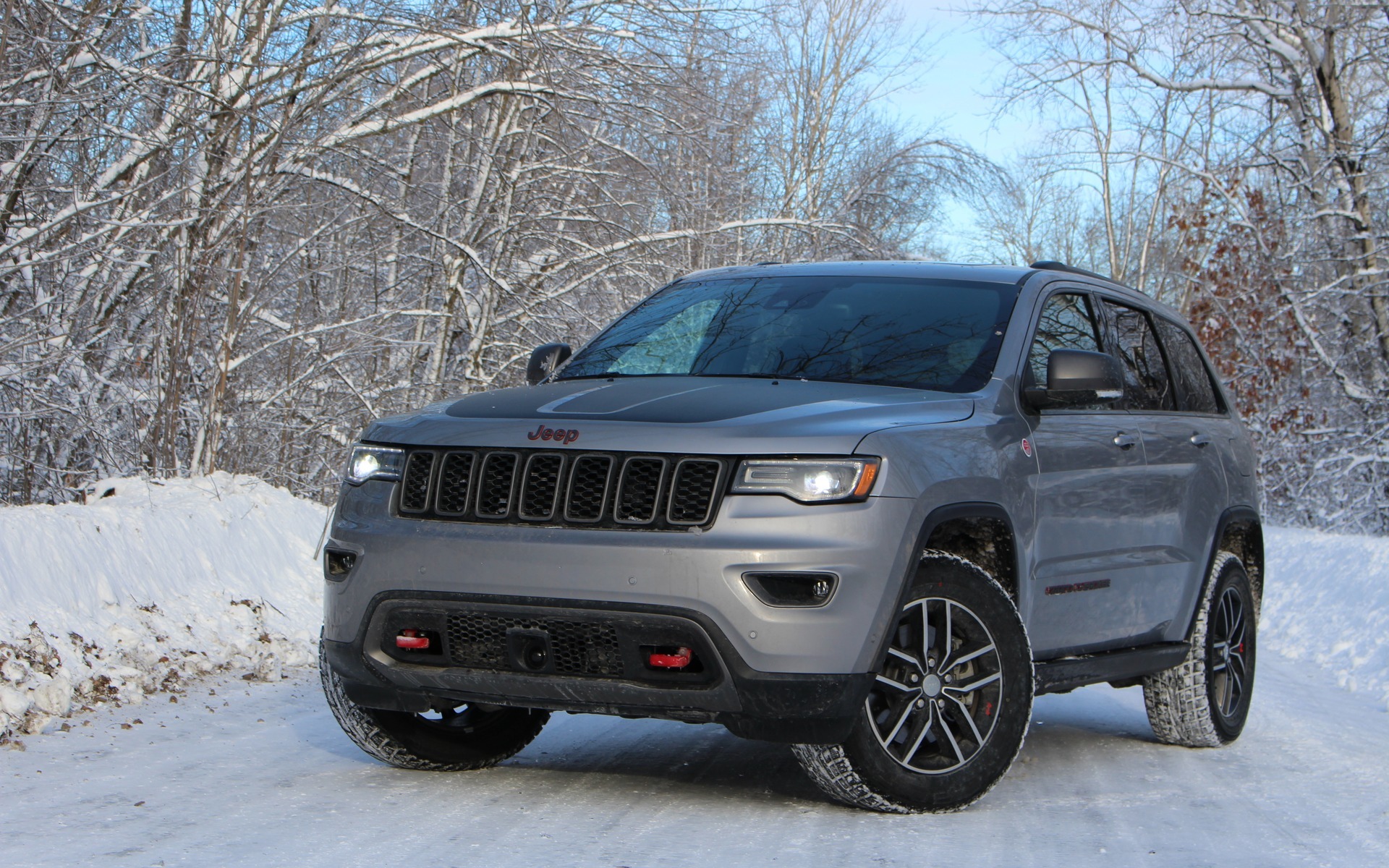
3. Jeep Grand Cherokee – Serious Strength for All Seasons
When discussing SUVs built for handling poor weather, the Jeep Grand Cherokee deserves mention. It’s more than just a rugged-looking vehicle. Jeep offers several versions of the Grand Cherokee with advanced 4×4 systems that give it a strong advantage in rain, snow, and even ice.
The Quadra-Trac II and Quadra-Drive II systems are designed to detect wheel slippage early and redirect torque to the wheels with grip. This happens fast enough that most drivers barely notice, except in the sense that the vehicle never seems to lose balance.
The Grand Cherokee also benefits from its weight and structure. It’s not a small vehicle, and that works in its favor during strong crosswinds or when braking on wet pavement. The vehicle feels planted and doesn’t get knocked around as much as some lighter competitors. This feeling of solidity gives confidence, especially when driving long distances in the rain or during fast-changing weather conditions. Many drivers comment on how it feels “calm” in situations where other cars feel twitchy or unpredictable.
Jeep has also focused on giving the Grand Cherokee real off-road capabilities that happen to translate well to bad weather driving. Features like hill descent control, terrain management modes, and active suspension adjustments let the driver tailor the vehicle to what’s ahead.
Muddy, slick roads, and steep, wet hills are all easier to handle when the vehicle is built to anticipate problems before they become serious. Not everyone uses these systems every day, but knowing they’re there gives an extra level of assurance when needed.
While Jeep isn’t always known for interior comfort, the Grand Cherokee changes that. It includes heated side mirrors, powerful defrosters, high beam assist, and advanced windshield wipers, all small features that make big differences in stormy weather. Combine that with driver assistance tech and strong crash safety scores, and the Grand Cherokee becomes more than just a weekend trail vehicle. It’s an everyday SUV that’s ready for whatever the forecast throws its way.
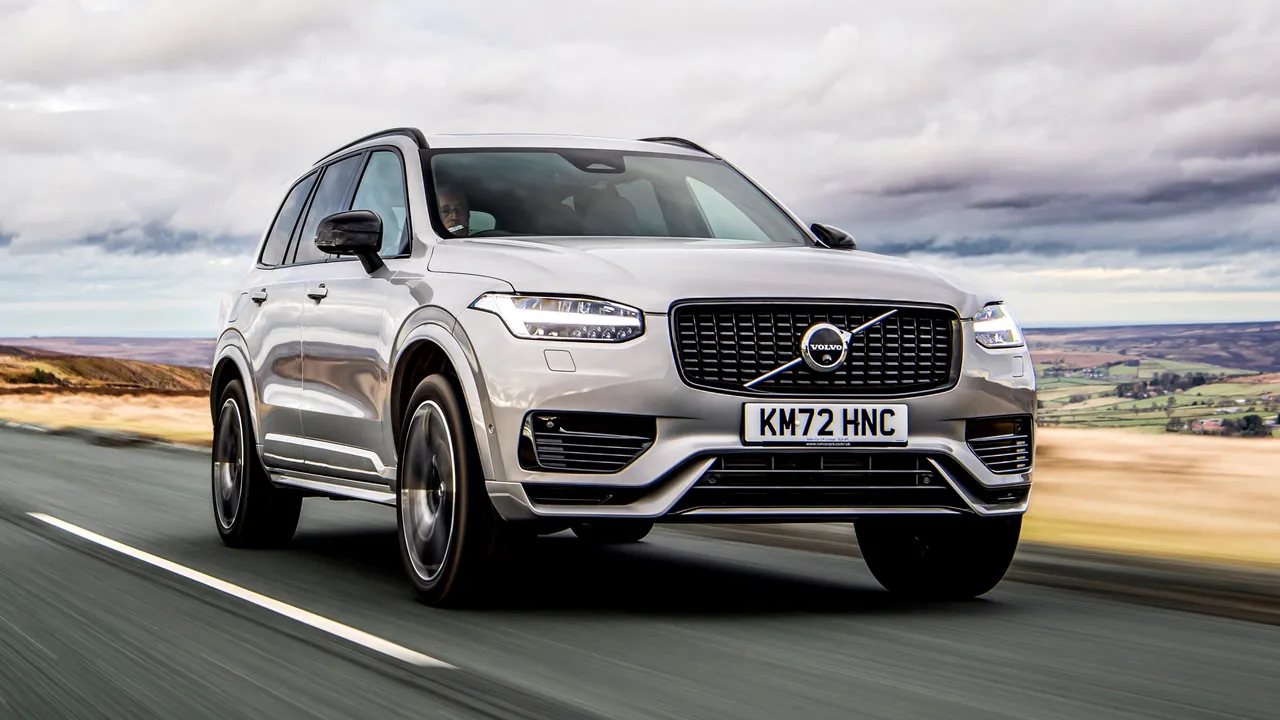
4. Volvo XC90 – Safety Engineering at Its Core
Volvo has long been associated with safety, and the XC90 keeps that legacy going. It’s a midsize luxury SUV that doesn’t just rely on comfort and tech but puts real effort into making the vehicle capable under difficult weather conditions.
The all-wheel drive system available across multiple trims is tuned more for on-road safety than off-road exploration, and that’s exactly what helps it excel in the rain. The vehicle feels stable, composed, and predictable, even when conditions are slippery or visibility is limited.
One of the biggest advantages of the XC90 is its traction control calibration. Some systems intervene too suddenly or too late. Volvo’s system, however, seems to respond with just the right amount of input, preventing a slide before it begins but without jerking the vehicle off course.
Combine that with electronic brake distribution and emergency braking features, and the vehicle can handle wet roads with a level of calmness that inspires trust. Even in sudden stops or evasive maneuvers, the XC90 rarely feels out of sorts.
Another feature that supports wet-weather safety is the vehicle’s weight distribution and suspension setup. The XC90 uses air suspension on higher trims, which can adapt in real-time based on road conditions.
This helps maintain a level ride, even when hitting potholes or puddles. The wide stance of the vehicle and the responsiveness of the steering system keep the driver feeling connected to the road. In a storm, these small engineering decisions add up to major safety benefits.
Inside the XC90, the attention to driver visibility is hard to miss. The cabin is designed with large windows, minimal blind spots, and well-placed mirrors. The wiper system includes rain sensors, and the climate control system clears fogged windows quickly.
Unlike some luxury vehicles that focus too much on style, Volvo keeps usability front and center. When safety matters most, in heavy rain, on icy roads, or during fog, the XC90 offers not only luxury but also engineering that keeps the occupants secure.
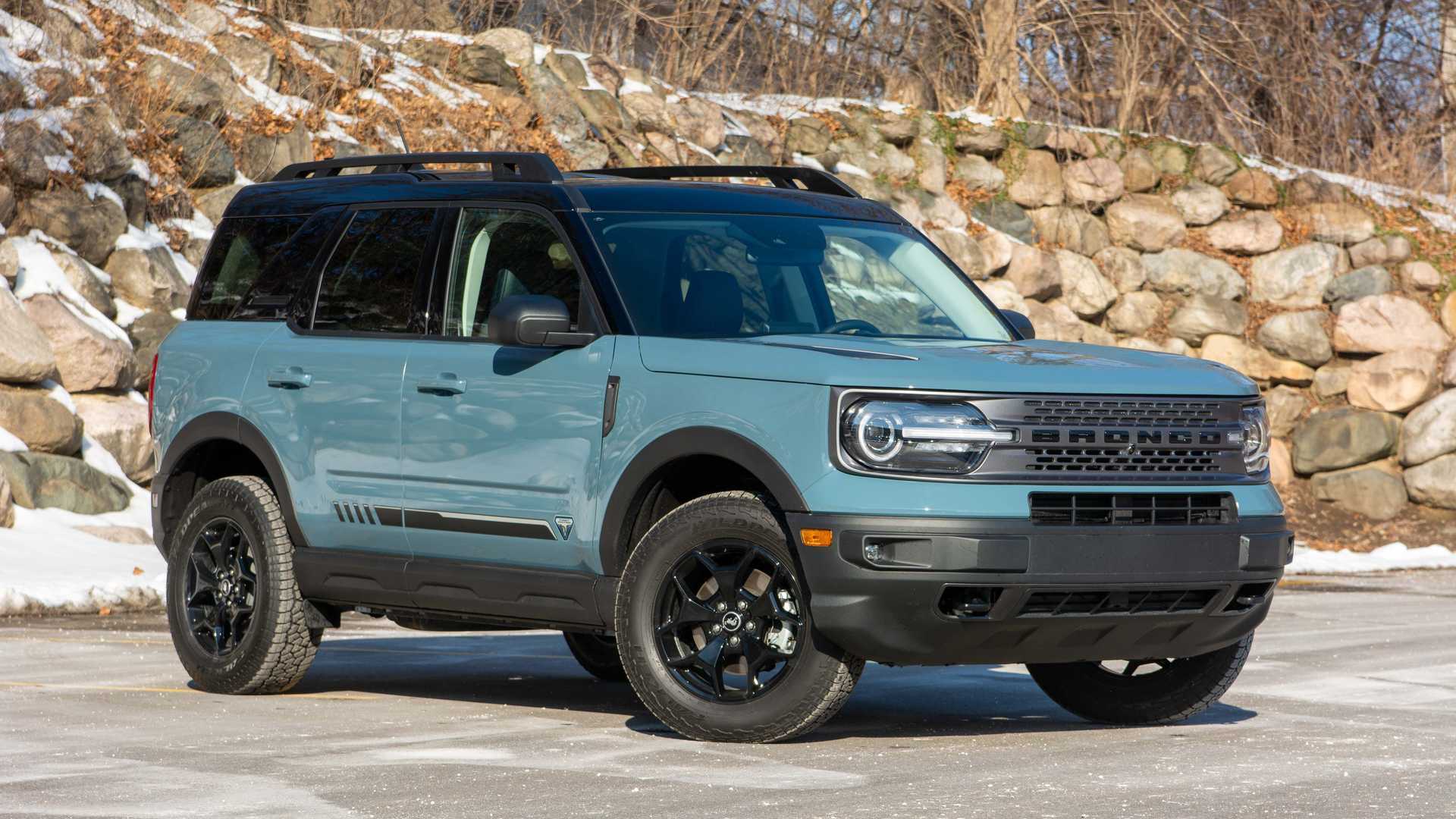
5. Ford Bronco Sport – Weather-Ready from the Factory
The Ford Bronco Sport may be smaller than the full-size Bronco, but it’s packed with features aimed at keeping drivers safe in challenging conditions. Designed with rugged use in mind, it benefits from a smart all-wheel drive system with a terrain management mode called “GOAT” (Goes Over Any Type of Terrain).
That’s not just a marketing gimmick. It provides preset settings that adjust the throttle, traction control, and drivetrain to maximize grip based on road conditions. When it rains, this system helps reduce the chances of hydroplaning and maintains a better balance during cornering or sudden stops.
The vehicle’s suspension is tuned for uneven and potentially unstable surfaces. That translates to better handling in bad weather, especially when roads are flooded or full of debris.
The Bronco Sport has ground clearance that surpasses many compact SUVs, giving it an edge when water pools on the road or snowbanks start piling up. Its underbody skid plates and sealed electrical systems even make it more resilient to water intrusion, something many urban-focused SUVs simply don’t prepare for.
Interior features also contribute to its all-weather capability. The Bronco Sport includes heated mirrors, automatic climate systems, and strong windshield wipers with excellent coverage. The upright seating position and large windows improve visibility in tough conditions.
Combined with driver-assist features like lane-keeping assist and emergency braking, the Bronco Sport is built to keep drivers and passengers safe, no matter how unpredictable the drive becomes. It’s not just capable, it’s also intuitive in how it reacts to changing traction.
Unlike some vehicles that require you to buy top-tier trims for key safety features, the Bronco Sport offers its all-weather capabilities across much of the lineup. That accessibility makes it one of the more practical choices for people who live in climates with seasonal storms, sudden rainfall, or light snow. It’s not flashy or overly luxurious, but it works, and that’s what matters most when the road gets dangerous.

6. Jeep Renegade – Style Over Substance in the Rain
The Jeep Renegade might look rugged with its boxy shape and off-road-inspired styling, but its performance in wet weather doesn’t live up to that image. One of the biggest issues is how its front-wheel drive versions handle in slippery conditions.
While some trims offer all-wheel drive, they don’t include the more advanced 4×4 systems available in larger Jeeps. As a result, drivers may find the Renegade struggling for traction during heavy rainfall, especially when taking turns or accelerating from a stop on wet pavement.
The ride quality of the Renegade can also make things worse in poor weather. The vehicle feels a bit jittery and top-heavy, which doesn’t help with confidence on slick roads.
Steering response isn’t as crisp as it needs to be when precise input is critical, and the braking system lacks the smooth, progressive feel that helps in unexpected stops. This combination of handling quirks and inconsistent grip can lead to an unpredictable driving experience when it’s raining hard.
Despite the rugged looks, the Renegade doesn’t offer the ground clearance or water protection features you might expect. Deep puddles and partially flooded streets can easily overwhelm the underbody, and there have been reports of electronic components being affected by water exposure.
While the higher Trailhawk trim improves off-road capability, it still doesn’t make the vehicle particularly stable in fast-changing weather. The appearance suggests readiness, but the mechanical execution doesn’t support that promise in real driving.
Inside, the Renegade lacks some of the basics that help with rain visibility. The wipers are underpowered for heavy rainfall, the mirrors are small, and the windows can fog quickly. Combined with limited rear visibility and a dated infotainment interface, the experience in the rain becomes more frustrating than reassuring. For drivers seeking true weather performance, the Renegade offers far less than its design implies.
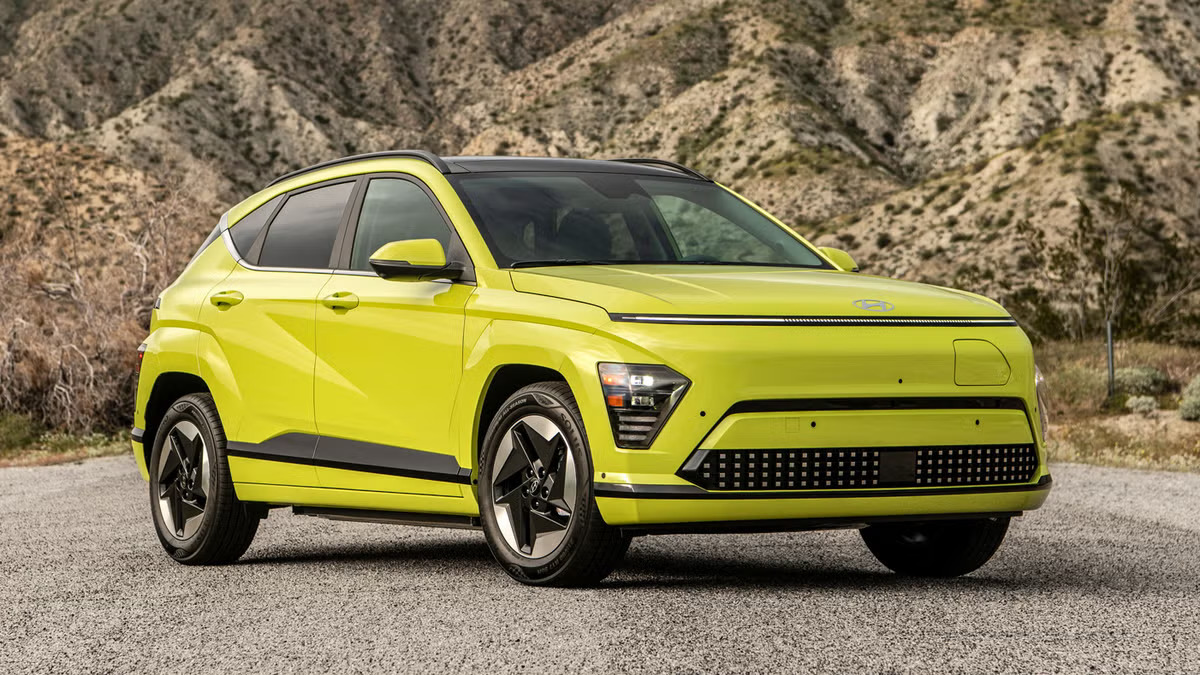
7. Hyundai Kona – Compact and Unstable in Wet Conditions
The Hyundai Kona has become popular due to its low price, tech features, and city-friendly size. However, when it comes to rainy or wet conditions, its performance is below average.
Most versions of the Kona are front-wheel drive, and while there is an all-wheel-drive option, it doesn’t fundamentally change the fact that this SUV feels light and easily unsettled during rainstorms. The small wheelbase and low ride height make it more likely to hydroplane than many of its larger competitors.
A common complaint among Kona drivers is how twitchy the vehicle feels on highways during storms. Steering is over-assisted, making small corrections harder to manage when winds or puddles hit unexpectedly.
Braking performance also suffers when roads are slick. Despite having decent ABS and electronic stability systems, the control just doesn’t inspire confidence. Wet braking distances are longer than in many similarly priced competitors, especially when equipped with the standard factory tires.
Visibility is another issue in poor weather. The rear window is small, and while the side mirrors are functional, they don’t offer the wide-angle coverage that helps in heavy rain.
Defogging performance has also been a concern in some Kona trims, especially in cold, damp weather. That combination of poor visibility and unsteady handling creates a vehicle that’s not well suited for even moderate weather challenges. It works fine in sunshine and dry city streets, but loses its edge quickly when the forecast shifts.
Even though the Kona includes modern safety tech like lane assist and forward collision warning, those systems can’t fix its core stability issues in wet weather. It remains a solid car for fair-weather commuters or urban drivers who rarely face extreme conditions. But for those who live in areas with frequent rain, flooded intersections, or unexpected storms, the Kona may not offer the protection and reliability needed from an SUV.
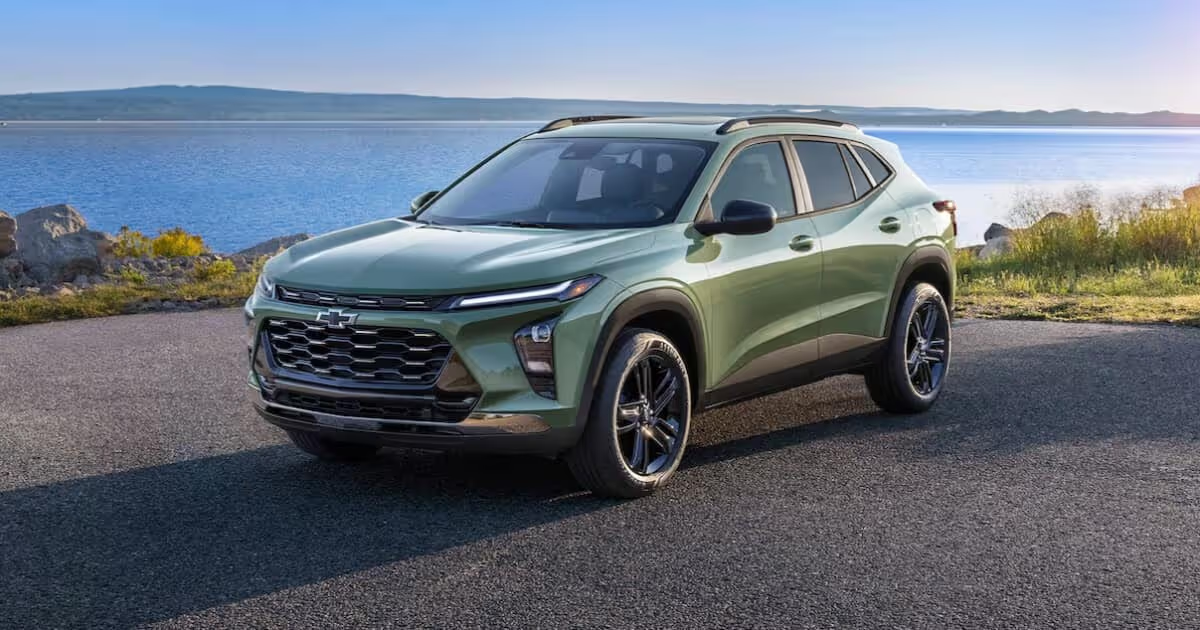
8. Chevrolet Trax – Economical but Unreliable in Storms
The Chevrolet Trax is one of the more affordable compact SUVs on the market, but its performance in rainy weather leaves a lot to be desired. The front-wheel drive setup on most models doesn’t provide enough grip during wet conditions, and even the available all-wheel-drive system feels more like a patch than a solution. Power delivery can be uneven, which is a problem when you need steady traction to avoid slipping on slick roads or wet leaves.
One issue with the Trax is its lightweight body structure. That might help fuel efficiency and maneuverability, but it works against the vehicle when strong winds or heavy rain come into play. The Trax feels like it gets pushed around on the highway, especially when water starts to pool between lanes. The lack of heft reduces tire grip, and the structure doesn’t feel grounded. That instability makes even short drives in storms feel unnecessarily risky.
The suspension system is another weak point. It’s tuned for comfort on smooth roads but reacts poorly to bumps and puddles. Hit a deep pothole during a storm, and the suspension can jar the whole vehicle, reducing control. Combine that with average braking performance and a sluggish transmission, and you’ve got a vehicle that doesn’t respond well when you need quick, decisive action in poor weather.
Inside, the Trax doesn’t offer the visibility, defogging power, or climate control efficiency found in better SUVs. The wiper coverage is limited, the windshield is smaller than average, and water can pool on the roof and drip down awkwardly during stops. It’s a serviceable daily driver in dry cities, but in places where sudden rainstorms, slick roads, and low visibility are common, the Trax falls far short of what most drivers need for safety and control.

9. Mazda CX-3 – Stylish but Not Stable in the Rain
The Mazda CX-3 is often praised for its styling and sporty feel, but that focus on handling doesn’t translate well to wet-weather performance. The vehicle sits low to the ground, which is great for tight cornering but not helpful for stormy conditions.
It lacks the ground clearance to deal with standing water, and its short wheelbase makes it feel jumpy when traction is low. Even in the all-wheel-drive version, the CX-3 doesn’t inspire the same control or stability as other vehicles in its class.
Mazda’s tuning for the CX-3 prioritizes responsiveness over predictability. That’s enjoyable on dry roads but becomes a problem when grip is inconsistent.
The throttle can be a bit too sensitive, and the steering responds too quickly, making it hard to maintain a calm and composed line when the roads are soaked. These traits, while fun for a spirited drive, create a stressful experience when every input needs to be calculated to avoid slipping or fishtailing.
In terms of braking, the CX-3 has decent hardware but still underperforms on wet pavement. The lighter weight and smaller tire contact patch reduce its stopping power when you need it most.
Drivers may also find the cabin to be noisier than expected during storms, which can add to the anxiety of driving in poor weather. The sound of rain pounding on the roof, coupled with less-than-ideal insulation, reduces comfort and focus when it’s most needed.
Mazda typically excels in interior design, but weather usability takes a hit here. The defrost system takes longer than average to clear the windshield, and the climate system can struggle in humid or stormy conditions. Visibility is compromised by narrow windows and small mirrors, which don’t help when heavy rain reduces depth perception.
While it’s a great choice for someone in a dry, urban area who wants a compact SUV with sharp handling, the CX-3 isn’t ideal for anyone who regularly faces serious rain or shifting weather.
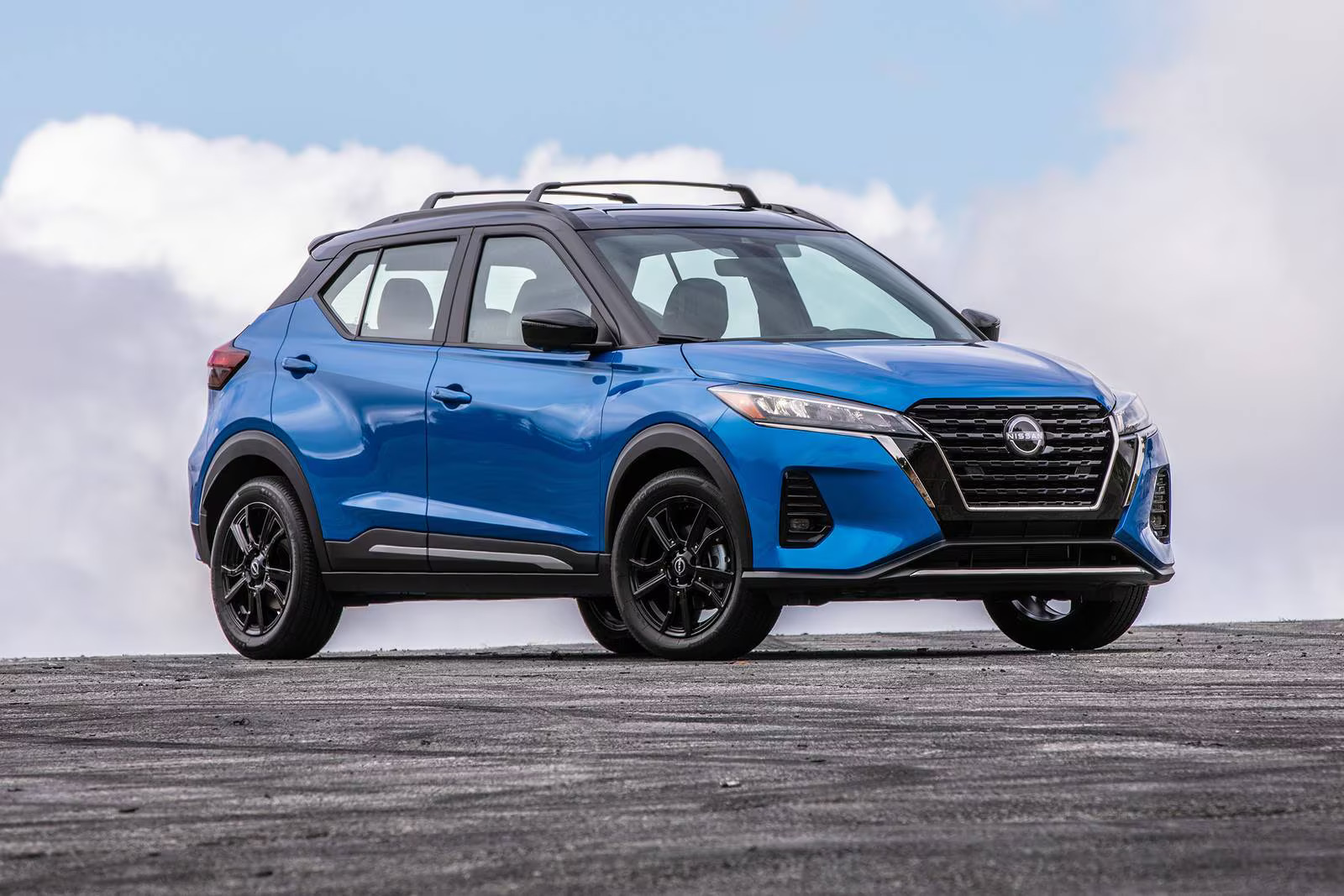
10. Nissan Kicks – Not Designed for Tough Conditions
The Nissan Kicks has made a name for itself with value pricing and fuel economy, but it’s not suited for unpredictable weather. It lacks all-wheel drive entirely, which immediately puts it at a disadvantage when roads become slippery.
In strong rain, front-wheel drive alone just isn’t enough to maintain full traction. When paired with a light curb weight and a basic suspension system, the Kicks struggles to stay composed on wet pavement.
Steering in the Kicks is vague, and road feedback is limited. That makes it difficult to judge surface conditions during rain, which is a problem for newer drivers, especially.
The tires on many factory versions of the Kicks are also more tuned for economy than grip, reducing traction even further when water covers the road. These shortcomings make the Kicks a risky choice for those living in wet climates or regions with seasonal flooding.
The braking system also leaves something to be desired in the rain. Pedal feel is soft, and while the ABS works as intended, the stopping distance increases significantly in wet conditions. Combined with the vehicle’s tendency to fishtail slightly under pressure, this results in a lack of trust between driver and vehicle during storms. For a car that targets new drivers and budget-conscious buyers, that can be a critical flaw.
The Kicks’ interior does little to offset its weaknesses. The defrost system is slow to clear windows, the rear visibility is limited, and the roofline design creates blind spots.
There’s a general sense that the car wasn’t designed with foul weather in mind. It might be perfect for dry, mild regions where storms are rare, but anyone looking for year-round performance should consider something with better engineering for all-weather safety.
Also Read: 5 Nissans That Stay Comfortable for Families vs 5 That Feel Cheap
Choosing the right SUV is about more than cargo space, horsepower, or brand reputation. When weather conditions turn bad, the vehicle you drive plays a direct role in your safety and confidence behind the wheel. As we’ve seen, some SUVs live up to their rugged reputations with strong all-weather performance, while others struggle to stay composed even in a heavy rainstorm.
The differences may not always be obvious from a test drive on a dry road, but they become very clear when visibility drops, roads get slick, and conditions demand more from a vehicle’s design.
The five vehicles that stood out for their ability to handle all weather, the Subaru Outback, Toyota RAV4, Jeep Grand Cherokee, Volvo XC90, and Ford Bronco Sport, each share a set of practical strengths. They have smartly engineered all-wheel-drive systems or advanced traction control, balanced weight distribution, stable handling, and useful visibility features that help the driver stay in control.
They weren’t just built to look tough; they were built to react properly when things go wrong. Whether it’s hydroplaning on a highway or navigating through light snow on suburban streets, these SUVs manage to stay composed, predictable, and easy to handle.
On the other hand, the five that underperformed, Jeep Renegade, Hyundai Kona, Chevrolet Trax, Mazda CX-3, and Nissan Kicks, expose the risks of confusing style or price with real-world usability. These vehicles may appeal to budget-conscious buyers or those looking for something compact and efficient, but they compromise too much in the areas that matter during storms or seasonal weather.
Some suffer from poor visibility or limited traction. Others have inconsistent steering or braking, making them harder to control when the roads are less than perfect. In each case, there’s a pattern of vehicles being designed for city use or fair-weather commuting, with too little attention paid to safety when the forecast changes.
It’s important to remember that weather safety isn’t just about one feature or a single drivetrain option. It’s about how the entire vehicle is tuned to behave under stress. A great SUV for rain or snow will not only offer grip and power but also let the driver feel in command.
That includes things like windshield wiper effectiveness, window defogging, responsive steering, and tires that match the vehicle’s intended use. When manufacturers put all these pieces together correctly, the result is a vehicle that handles like a partner rather than a burden during difficult drives.
Buyers who live in regions where the weather is unpredictable or severe should be especially careful when choosing an SUV. Not all of them are up to the task, even if the advertising suggests otherwise. Looking beyond the badge and focusing on performance in real-world conditions can help drivers avoid regrets and, more importantly, avoid dangerous situations.
For those who prioritize safety, control, and stability no matter the season, a handful of SUVs continue to set the standard while others prove that not every crossover deserves the confidence of its driver.

